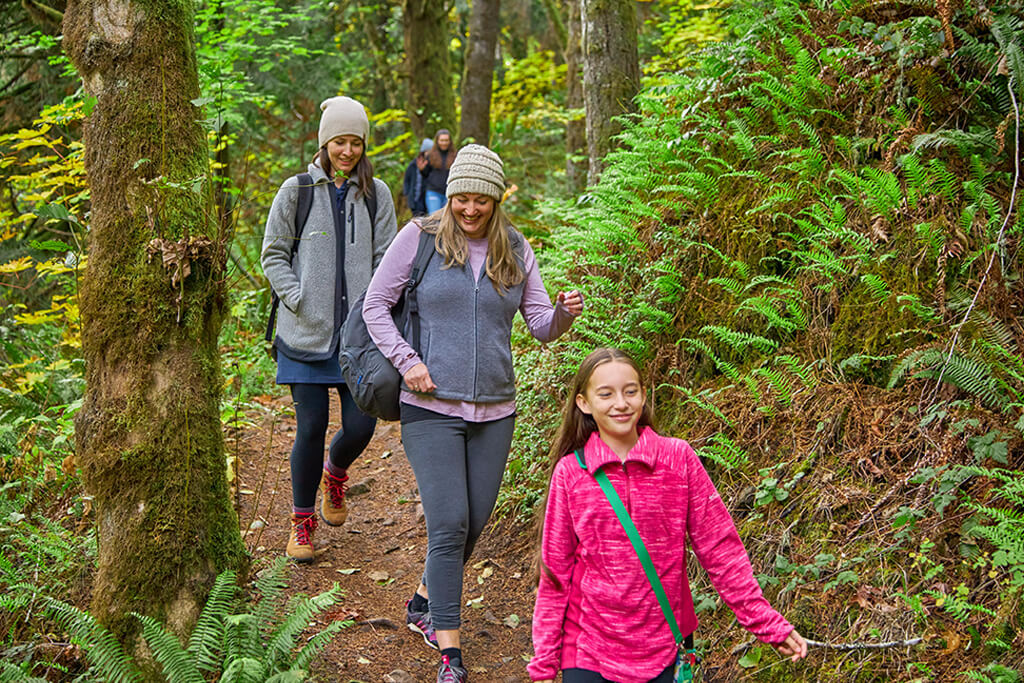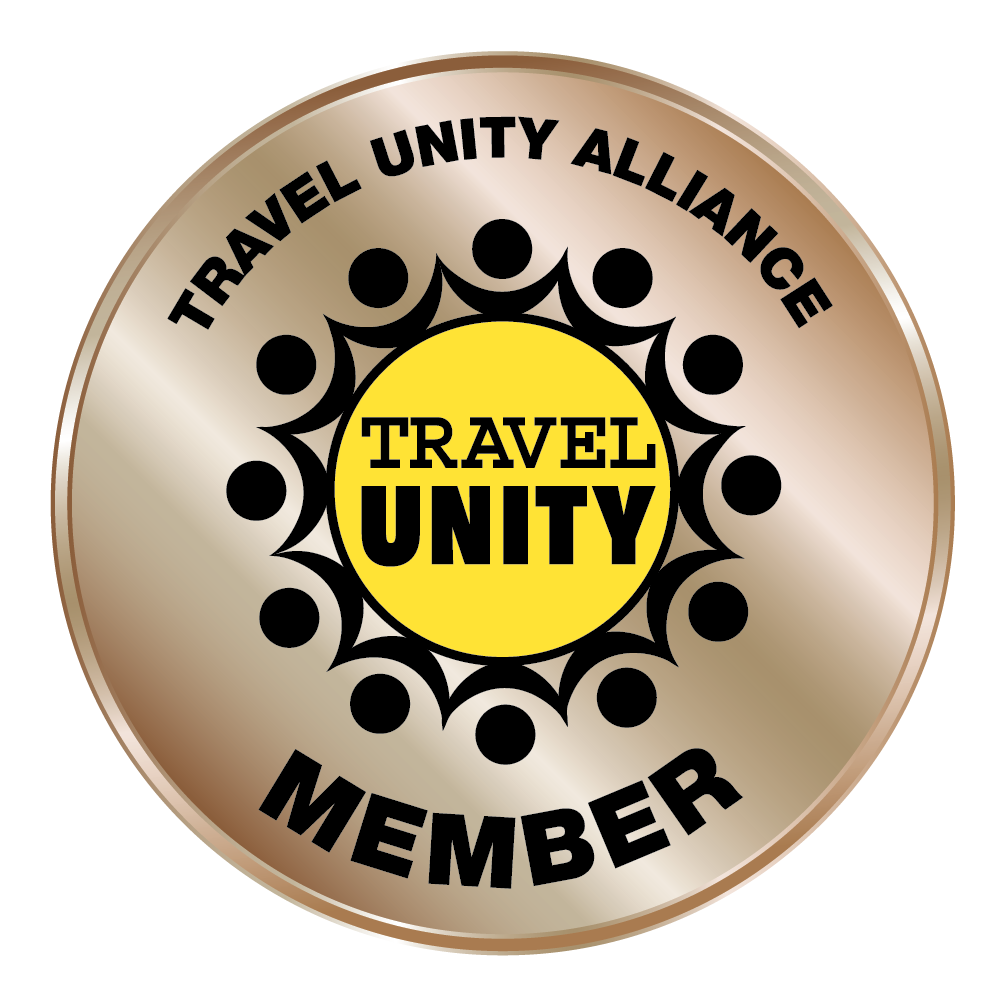The Ultimate Guide: How To Hike in the Willamette Valley
Whatever hiking experience you enjoy, you'll find it around the Willamette Valley—from laid-back ambles along urban rivers to epic, multi-day outings in the heart of the mountain ranges that bookend our region.

But before you hit the trail, you'll want to keep a few things in mind to help stay prepared, remain safe, and have an enjoyable time in our forests, parks, and other outdoor destinations. So we've rounded up a guide to some of the best practices for hiking in the Willamette Valley, as well as how to stay safe, what passes and permits you may need, and helpful resources for finding your next favorite trek. Happy trails.

Best Practices for Hiking in the Willamette Valley
Before heading out, you'll want to be prepared so you can have the best possible outdoor experience. Here are a few tips, tricks, and recommendations for making the most of your next outing.
Outdoor safety: We ask that you be safe and follow best practices for outdoor safety when enjoying the Willamette Valley outdoors.
Ten Essentials: Be sure to pack along the Ten Essentials of Hiking—basically, 10 things you should bring on every hike, no matter how short or how good the weather. These items include a map and compass to back up your phone's GPS unit, extra food and water, rain gear, a first-aid kit, and more.
TripCheck: Road closures and delays can throw a wrench in even the best-laid plans—so use the Oregon Department of Transportation's TripCheck tool to stay updated on closures, detours, and more. The site includes text updates, webcams, weather information, and other key travel information.
Time your visit right: Some of our parks and hiking trails are extremely well-loved (meaning, crowded)—so if you'd like a quieter experience, we'd suggest a shoulder-season outing (April-May and September-October), when crowds are smaller. Hiking on weekdays, or starting your weekend hikes by 9 a.m. (or after 3 p.m.)—when the light is softer (for better photography), wildlife is more active, also helps as fellow hikers aren't as likely to be on the trail.
Take Care Out There: In early 2020, Travel Oregon introduced Take Care Out There—a toolkit to help outdoor enthusiasts prepare for their adventures, care for the lands they visit, and connect with local communities on a deeper level. Learn more, and see how you can Take Care Out There on your next outing.

Safety Tips for Hiking in the Willamette Valley
Here's how to have the safest, most enjoyable experience possible in the region all year long.
Know what's open and accessible: The best way to stay safe and have fun is to know which areas are open—and how they might have been impacted in recent years by wildfires and other events. We've put together guides to recreation along the McKenzie River Corridor, as well as the Detroit Lake and Santiam Canyon areas, to show how hiking, camping, and eating opportunities might look different this season. Wherever you go, check in with local land managers, and do some research online to see if your desired destination is open and accessible—and what precautions you may need to take when visiting.
Bring plenty of water: One of the most common issues impacting outdoor enthusiasts is an easily remedied one: a lack of water. REI has put together an excellent guide to staying hydrated outdoors; you might also want to consider purchasing a water purification tool (such as iodine tablets or filters)—especially since the Willamette Valley and West Cascades are home to so many waterways, lakes, and more. Learn more about water purification methods, and see which option is right for you.
Wear sunscreen: The Willamette Valley may have a reputation for gray, overcast weather—but our summers heat up by early July, and sunny days are frequent, even beyond Labor Day. Be sure to wear plenty of sunscreen with an SPF of at least 30 to protect against sunburns.
Give wildlife its space: Chipmunks and squirrels may look adorable, but we ask that you refrain from feeding the cute critters. And if you're lucky enough to see deer, elk, black bears, or other wildlife while on the trail, be sure to give the animals plenty of room to roam. The National Park Service has a guide for safely watching wildlife with detailed recommendations for keeping your distance.

Passes and Permits for Hiking in the Willamette Valley
Not all outdoor destinations around the Willamette Valley require permits or passes, but some do—so here's how to prepare for possible payment at your favorite parks.
Oregon State Parks pass: Detroit Lake State Recreation Area, Silver Falls State Park, and a handful of other state parks in the Willamette Valley charge $5 day-use fees—payable by cash or card at automated stations near park entries. Note that 12- and 24-month permits are available online, as well. Learn more about day-use fees at Oregon State Parks.
Oregon Sno-Park parking permits: Local wintertime destinations on U.S. Forest Service Land, mostly in the West Cascades, typically require an Oregon Sno-Park permit between November and April—available as a daily pass ($4), a three-day permit ($9), or a season-long permit ($25). If you're cross-country skiing or snowshoeing our wintry trails, chances are good you'll need a Sno-Park permit.
Northwest Recreation pass: Destinations and trailheads on U.S. Forest Service lands typically require a day-use fee—most commonly paid in the form of a $5 single-day pass, a $30 (annual) Northwest Forest Pass, or as an $80 (annual) America the Beautiful pass. Learn more about (and purchase) passes for recreating on U.S. Forest Service lands.
Central Cascades Wilderness Permit: Some trails within the Willamette and Deschutes national forests (such as the Marion Lake trail and the path to Proxy Falls) are part of the Central Cascades Wilderness Permit System, which limits the number of day-use and overnight visitors to certain areas in summer and early fall. These permits may be required in addition to a day-use fee and must be purchased in advance.
Camping fees: Campsites at Oregon State Parks can range from $17-44, while cabins and yurts may run $26-108; sites can be booked in advance on ReserveAmerica.com, and tent and RV sites can be paid via cash or card at each campground (if sites are available upon arrival). Keep in mind that camping at Oregon State Parks confers day-use access as part of your visit. So if you camp at Detroit Lake, for instance, you don't need to pay another $5 to visit the day-use area; just display your camping receipt on your vehicle's dashboard, and you're all set. Camping on U.S. Forest Service Land, meanwhile, typically runs $15-25 per night, and reservations can be made online at Recreation.gov.

Resources for Hiking in the Willamette Valley
Whether you're interested in hiking in a nationally recognized park, one of Oregon's state parks or are looking for an outing in a local city, there are plenty of resources that can help you have a fun, safe time outdoors. Here are a few links to help you get started:
National Forests: The Willamette Valley is home to two national forests with countless opportunities for outdoor adventure. At the western edge of the valley, in and around the Oregon Coast Range, is the Siuslaw National Forest. And at the eastern edge of the valley, comprising a scenic stretch of the Cascade Range, is the Willamette National Forest. (Check out The Willamette Explorer, the official guide to the Willamette National Forest, for tons of great outdoor ideas in that region.)
Oregon State Parks: Roughly two dozen state parks span the Willamette Valley and West Cascades; those include Sarah Helmick State Recreation Site (the first park in the Oregon State Parks system), Silver Falls State Park (home to the majestic Trail of Ten Falls), and Thompson's Mills State Heritage Site (which hosts the last water-powered mill in the state). Learn more about Oregon State Parks.
City and county parks: Numerous city and county parks dot the Willamette Valley and West Cascades. Cascadia State Park, for instance, is actually run by Linn County Parks & Recreation—and hosts a few campsites, as well as a short hiking trail to the scenic Soda Creek Falls. And Eugene's Alton Baker Park offers several walking trails, as well as a host of other activities, along the Willamette River.
Oregon Hikers Field Guide: If you don't know where to begin, the Oregon Hikers Field Guide is a treasure trove of hiking profiles (complete with descriptions, turn-by-turn directions, photos, and more), as well as trip reports, safety tips, and other helpful resources.








